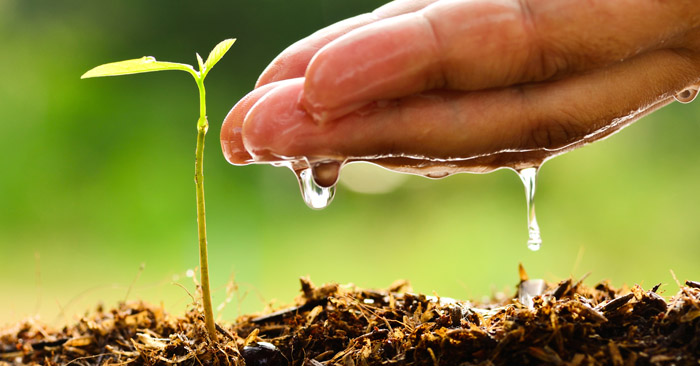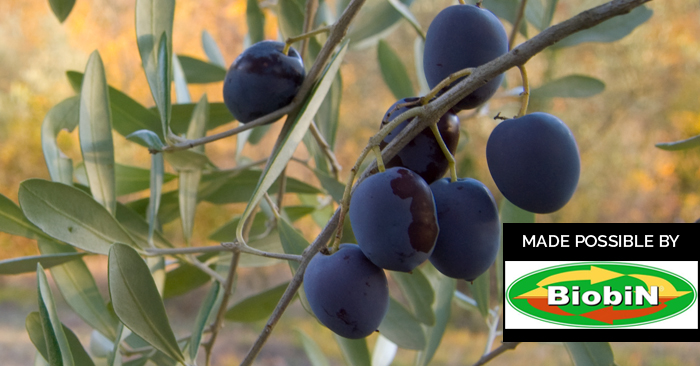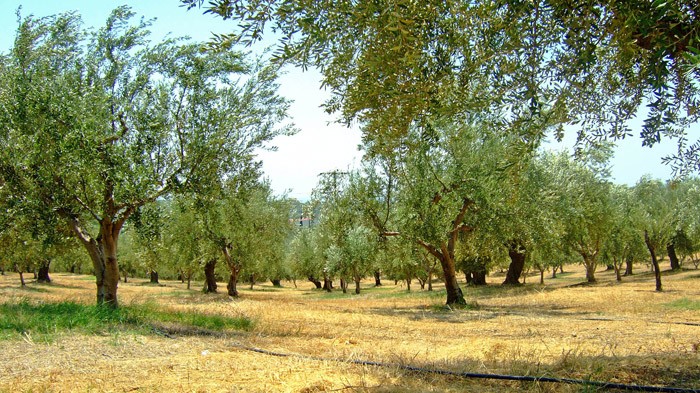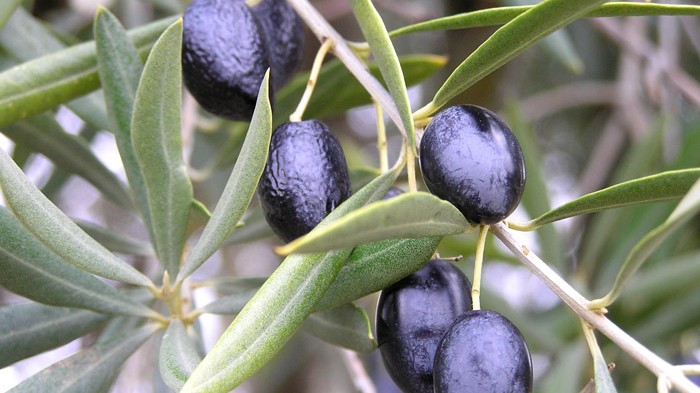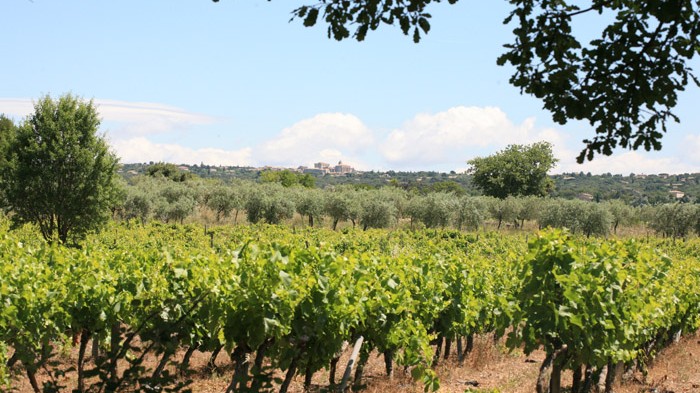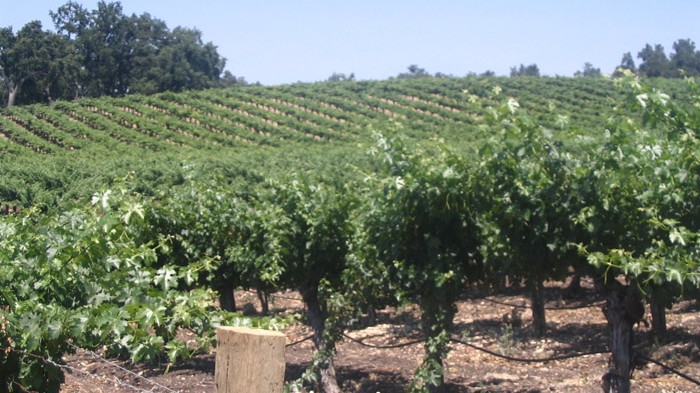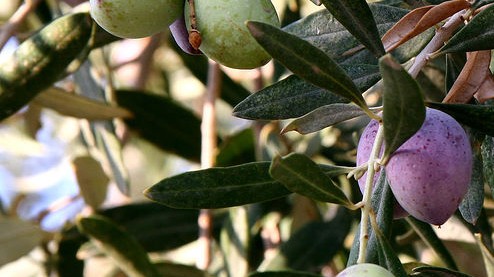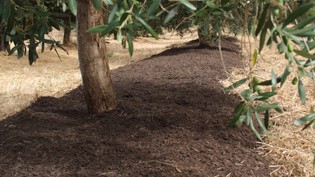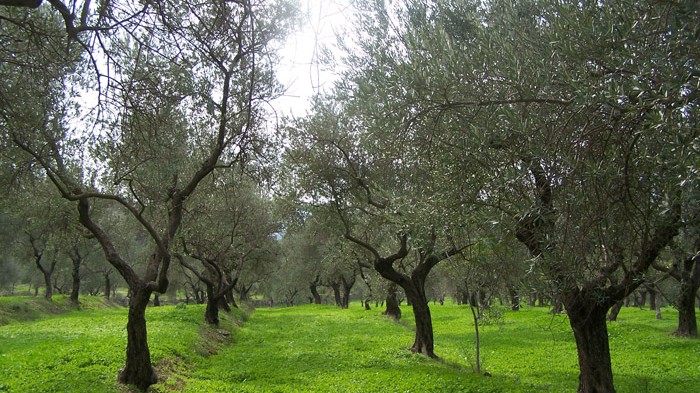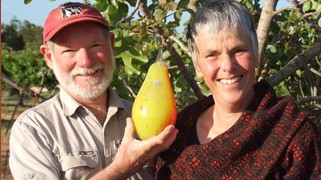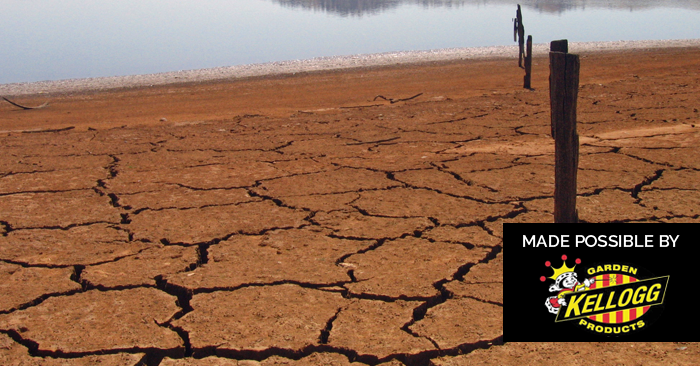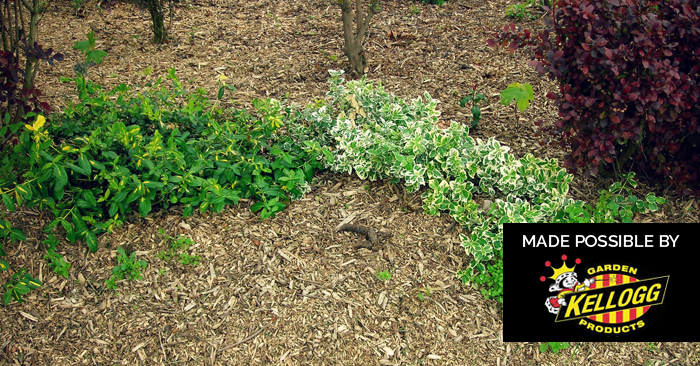[Retrospective] Drought Special #3: Fighting A Drought: Levers for the Public Sector

EPISODE SUMMARY
While we will continue to make new episodes, there are times when we feel the urge to highlight a past episode – because the topic it covers becomes news and the show shares some great insights, or because it is content that our newer listeners might have missed out on. Since last year was the International Year of Soils, we will be republishing a few of our best episodes about soil and soil health to get a fresh perspective in light of all the progress that has been made on the issue.
Today’s retro episode is all about policy, and the Australian experience.
Our guests are former Governor General of Australia and Advocate for Soil Health, Major General Michael Jeffery, and co-founder of Ylad Living Soils Rhonda Daly. In this episode we discover the crucial elements needed to build a comprehensive policy framework that will protect not only our soils but our landscapes. We look at the current Australian system, soil health, incentives for compost production, farm management practices, and the need to change our systems in order to better reward and support our land managers – the stewards of the earth. We then link this back to the current recommendations made in the FAO’s report Status of the World’s Soil Resources.
Links to other episodes in the Series:
Episode 2
–
LINKS:
Episode 2: Drought Special #3: Fighting A Drought: Levers for the Public Sector.
Status of the World’s Soil Resources 2015, Technical Summary. FAO Report.
–
FEATURED EVENT
International Composting Awareness Week Australia (ICAW), is a week of activities, events and publicity to improve awareness of the importance of compost, a valuable organic resource and to promote compost use, knowledge and products. We can compost to help scrap carbon pollution by avoiding landfilling organic materials and helping to build healthier soils.
–
–
Photo by suburbanbloke / CC BY
Transcript:
When it comes to drought, it seems that up until now, the drought relief packages were based on Exceptional Circumstances programs and included mostly financial support for farmers already in dire circumstances, with very little attention given to actual prevention of drought or preparing for drought before hand. However, there are some changes occurring now with the National Drought Program Reform that is starting in July, which recognises that drought no longer fits in the exceptional circumstances category, and will focus more on drought preparedness through providing training programs for land managers on risk assessment and financial planning and so on. But General Jeffery and Rhonda Daly, you both agree that a lot more has to be done. So General Jeffery, maybe you can tell us what you think is necessary for the public sector to do in order to actually prepare for drought and minimise the effects of drought on the Australian landscape?
General Jeffery: Well I think the first thing to do is recognise that at the present time, Australia doesn’t have a real national policy in terms of how it wants to look after the Australian landscape as a totality; that is, its river systems, its flood plains, its wetlands, its riparian zones; agriculture areas, grazing areas, mining areas and so on. And I think until we get a policy that spells out the need to have, perhaps as a light on the hill, to restore and maintain an Australian landscape that is fit for purpose – that is fit for all the things I just mentioned – we’re all going to be stuck doing itty, bitty things (and some of them quite important and quite good), but until we get an over-arching aim of what we want to do, with total state and local people all singing from the same sheet of music, I think we will be struggling, particularly when it comes to drought.
It’s getting that policy agreed to restore and maintain an Australian landscape fit for purpose; it has been knocked around a bit. And you can’t blame people, that’s the way people were taught and trained at the time, but –
Rhonda Daly: Don’t you think also that because they’re using water as a commodity – as an economic commodity – and so we’ve got this false economy coming in where we think we’re a rich country, but we’re actually deteriorating the landscape really badly. Short-term it appears that we’re not doing so much damage because economically we’re doing so well, but ultimately, the wheels are going to fall off that analogy for sure.
So Rhonda you’re saying that people involved have a very myopic view of the situation and focus only on the short term economic results, rather than the bigger picture, which I think is definitely the case in many other countries as well. And General Jeffery, you’re saying that we need to get all levels of public sector – local, national and state, to come together and agree on a national policy for restoring and maintaining the landscape. How would you propose we start?
GJ: Well part of the issue has got to be that, if we want to restore and maintain this landscape so that it is fit for various purposes, you’ve got to ask yourself, “What are the three key ingredients that will enable us to do that?” And it’s really about the integrated management of your soil, your water (that is, the hydrology), and the biodiversity – the plants and so on that you’re growing, whether crops or grasses, or what have you. So, good farming practice and land management practice, mining practice and everything else, depends on the stakeholders having a very clear understanding of the need for that integration, and understanding the art and science of doing it properly. And that’s where good farming practices and land management practices come into play.
My next question here was to ask you if you think soil is the most important factor for healing the landscape and therefore protecting against drought, but what you’re saying is that all three aspects, soil, water and vegetation, are all important?
GJ: Yes, I think we’ve got to talk about landscape rather than soil. Although I’m the National Soil Advocate, I think that’s a misnomer to a degree because it gets everybody focused on just looking at soil, when we should be looking at water and biodiversity. And Rhonda raised a very good point specifically on the water, where I think our focus in this country for many years has been in the wrong direction. We’ve always looked at how much water we’ve got in our rivers and streams and dams, and we then issued licenses, and so on, to users of that water. But the total amount of water falling on our landscape every year, if you take it as a hundred drops: only ten drops end up in the rivers, two drops end up in the dams, and another two drops end up as run-off off the roads and roofs – that’s only fourteen percent.
But that’s what we all look at – we focus on that because that’s what we can see. Where we’re missing is the other eighty-six percent that falls on the landscape, of which only about thirty-six actually gets into the soil where you want it, and the other fifty percent evaporates into the atmosphere because it can’t infiltrate.
And holding water in soils is a very important of drought management as well, which we’ve mentioned quite a few times in previous episodes. Rhonda, would you agree with that?
RD: I would agree. I would agree that there’s a huge amount of land that, as you say, needs hydrating – the wetlands and… But you know, truly and really I think that it’s quite sad that I don’t know whether they see that as the most important thing that they have to do at the moment. I think so much energy is going in other places. I truly don’t believe they know the workings of our environment and landscape, and what is the best way of getting it back – and spending the dollars to get it back into a healthy condition again.
GJ: I think that you really need political decisions at the senior level of federal and state to ensure a proper implementation of an appropriate process. So, I think it gets back again to this lack of an over-arching policy where we need to look after the landscape, and then the various ingredients that’ll make it work, and we discussed two or three of them earlier on.
Indeed. And what you’re saying is that it really is important for senior levels in government to take an active role in this, because there are big decisions to be made, and they need to steer the ship. But in terms of getting the research right, there are already wheels in motion, because just recently the Australian Department of Agriculture, Food and Forestry recently launched the National Soil Research, Development and Extension Strategy, which aims to secure Australia’s soil for profitable industries and healthy landscapes, and among its many goals, it aims to “improve communication and sharing of soil knowledge”, and “to adopt a national approach to building future skills and capacities”. SO this is definitely a step in the right direction and perhaps it will achieve some of what you are calling for?
GJ: Yes, I think that is a good step in the right direction, and as the National Soil Advocate, we were able to bring together an expert advisory panel of four of the nation’s top land management scientists, backed by another twenty or so scientists who support them, and we were able to input into that strategy, which was really about doing four things: quantifying our soil asset in respect to data and mapping, and what are our soil types, and how healthy is it. And then, how do we go about securing our soil by identifying and evaluating best practice by looking at soil structure improvement, soil biology, carbon and so on. And the third bit was to look at understanding our soils, which is the technical level: the training of our ag scientists, soil carbon sampling, understanding the hydrology of our soils, understanding the soil biology and so on. Then there was soil at the interface, which was really looking at the search on environmental impacts: understanding water capture and storage in soil. So I think that the RD&E (the Research Development and Extension policy) that was launched by the minister a couple of weeks ago is very much a step in the right direction and I’m pleased that we were able to have at least a little bit of an input into it.
That’s a pretty comprehensive strategy focusing on soils, and I daresay one of the first of its kind. And it will be interesting to see how it plays out in the future. But in the past, has soil and soil health has featured in Australian drought policy in any big way before now, or has it been side-lined?
RD: From y perspective I would think that in all of the drought policies that they’re putting into place, soil health is definitely featured, and not only soil health but the management practices as well. So, yes they are incorporating and recognising that soil health is a major player in ensuring that we hold more water in our landscape for plants in these drier times. So, I think they’re recognising that, but there just seems such a huge part, and chunk, that still needs converting. Because, I would say that there’s really only maybe two or three percent of Australian farmers who are actually really practicing regeneration of the landscape, and the rest is going as business as usual. And how do we get the business as usual people to understand the importance of their soil, not just for today’s farming and their productivity and profitability, but for future generations to come?
So, I think Australia’s got a really short term view of their soil health, and we tend to – and that’s because of economic restraints – but we tend to look at just the now. “What do we do now to make us a profit this year that will keep us on the farm next year?” And I think economics, with one in seven farmers owing more than half a million dollars, plays a huge role in farmers up taking these different methods of rebuilding our landscapes back to being healthy again. It’s very much on just paying the bills.
GJ: One of our policy drives in restoring and maintaining this landscape fit for purpose is to reward farmers fairly not just for their product, which is another subject in itself, but also as primary carers of the agricultural landscape, because they look after about sixty percent of the continent. And I believe that we need to reward farmers for looking after the landscape on behalf of twenty-two million urban Australians. Now as to what sort of thing you might do to do that, it can be varied: it might be designating part of the new land army that the Government is going to establish to plant trees on the ridges where a farmer wants it, or to get a cheaper bank loan if he’s going to fix his riparian zone, or a whole range of measures that are not hand-outs, but are provided with a definite outcome in view, which relates to restoring and maintaining that landscape so that it’s in the best possible condition. And I think if we’re clever we’ll be able to do that, and in part overcome the problem that Rhonda’s just raised, that so many of our farmers are in very, very heavy debt.
Right, which definitely won’t help. And on that note, would you say, General Jeffery, that if the new carbon sequestration methodology gets approved, that this would encourage farmers to change their practices? And for our audience, this new methodology is part of the Carbon Farming Initiative, which is a Federal Government initiative to enable people in the land sector to generate revenue through the reduction of carbon emissions by using approved methodologies. So, would this be a potential help for them?
GJ: Yes, I think that if we’ve got a climate change problem – and I believe we have – that’s going to exacerbate our ability to produce more food, and the only way we can help to adjust to that is by sequestering carbon into the soils. The big issue for Australia is going to be in the complexity of the legislation – all the criteria upon which farmers can gain access to that money. And I think we really have to have measuring systems for carbon that are set to business standards, not to scientific standards, so your means of measuring don’t have to be quite so accurate when you’re talking about commercial operations, and therefore can be a bit simpler in terms of a farmer then being able to access what could be a very important source of revenue; and also a very, very important source of helping to adjust to climate change, and perhaps to control it to a degree.
And touching on what you said before, about support payments not being hand-outs: I wonder about citizens in general, particularly urban dwellers, are they sympathetic towards farmers and their situation, or is there work to be done there to get them on board?
GJ: Yes, well another of our policy drivers, and I think it may almost be the most important, is to reconnect urban Australia with its rural roots. That is, reconnect twenty-two and a half million people living in cities and towns with a hundred and thirty thousand farmers and perhaps a hundred thousand miners, or something like that. Now, unless we do that we’re going to find an even greater gap and lack of understanding between the two. And of course, you’ll never get the political support that’s needed to look after our farmers and landscapes properly unless you’ve got voter support. So we have to have that reconnection.
And to do that I think there are several ways. The first is that we’ve got to get to the young people, and I would do this by setting up, for example, a school garden in every school in the country. Something that can show a six year old, and then a ten year old, and then a thirteen year old, just exactly what the soil does, and how it’s composed, and how photosynthesis and transpiration works; and how you produce healthy food from healthy soil that leads to healthier animals and healthier people. So I think that is one simple way in which we can get urban Australia over time connected; and hopefully the kids will take these messages home to mum and dad, and that would help us get through to the adults at the same time.
But getting the adults on side, I think we’re going to have to use a little bit of stick and a little bit of carrot. The stick is going to be the global food imperative, because in my view we’re going to be pushing it, and I think we’re going to see a lot of social disruption and probably conflict impacting on hundreds of millions of people – and Australia will not be isolated from that. So what we have to say to our own people is that there are going to be big, big problems overseas, and whilst we have some problems in how we’re looking after our landscape here, we’ve also got the answers. And if we’re clever enough and fast enough, we’ll get those answers implemented pretty quickly. And not only will it ensure our own food-water security, but we’ll also be able to export some more food – but even more importantly, export knowledge, because even if we double food export, we’d only feed a hundred million, but if we exported knowledge we might be able to feed a billion.
I’d really like to stress the school garden idea myself as one of the best ways to get the urban population interested in nature. There are also things like community gardens and urban farms that can really help forge a connection. School compost schemes and education can play a huge part too, and I’d like to speak more about compost now, because we’ve heard a lot in previous episodes about the benefits of compost for soil health and drought protection. And Rhonda, you have a wealth of experience in the industry, and as a compost producer yourself, can you tell me what type of incentives exist for you that encourage compost production and use?
RD: That’s a really good question, and I’ve had to search my mind. On a smaller level, the council is starting to introduce green bins to collect compostable waste, and there’s recycling bins and things like that. But from a primary producer’s perspective, I don’t really know of too many incentives or initiatives where people will come – unless there’s a trial being done by Landcare or CSIRO, where they want to get the compost – for them to get into using compost or other biological fertilisers that are a little bit softer on the land and create healthier plants at the same time.
AORA is an industry body – the Australian Organics Recycling Association, which used to be the old Compost Australia – they are promoting it as much as they can, but I do feel as though there’s got to be more policy in there that is going to give farmers the incentive – and possibly there’s going to be a dollar incentive. However, I do believe that there’s going to be people who want to do it because they know intuitively that that’s what they need to do while they’re here on earth. However, the ones who still haven’t reached that calling yet, that maybe the Soil Carbon Methodology, or policies, will see them change over to something new.
So there may need to be financial incentives for some farmers to get them to start composting. And often compost producers will tell us about roadblocks or regulations that actually hinder their ability to run their businesses. Can you tell me about the situation regarding this where you are?
RD: Yeah, sure. It appears that our government supports recycling organic waste – so, reducing landfill, rebuilding soils and… However, the cost of complying with many of these regulations make it not worthwhile for a lot of companies to pursue. And I actually phoned Paul Coffey from AORA today and asked him what’s going on, because he’s right on the ground level: and the EPA are at present trying to impose a new regulation that is going to put a huge financial burden on compost operations, where they have to have a bank guarantee, and it has to be supplied to the EPA saying that if the operation for some reason goes insolvent, then the money [is used] to cover the clean up of the site. Inevitably this is one situation where this happened. It’s going to cost some operations as much as one-point-five million dollars to have a bank guarantee sitting there, and, as Paul was saying, it will close down many, many operations. And the thing that they’re forgetting to see is that levies are paid to the EPA that could be used for these clean-ups.
So, this is just one of those regulations made in their ivory tower, they’re not really in touch with what’s out there, and it could cost the industry very, very dearly because less people will be wanting to go into composting and recycling these seventeen million tonnes of organic waste that we have.
I guess it just comes back again to having a clear and coordinated strategy so these things won’t happen.
RD: Yes. Well, it’s fortunate that we do have AORA there, and Paul spends a lot of time doing policies, and going to the EPA and working it out for members such as myself. So, definitely, these bodies are very, very important for the ordinary person like myself, because they’re there to ensure we don’t get so many restrictions and conditions on us that it makes it basically impossible do composting.
It’s definitely is an issue I’ve heard before, which once again seems to show that more coordination across different interests could really help. And what I’d like to focus on now is farmers and land management strategies. Because one of the key ways to make change happen is to demonstrate how it can be done, and General Jeffery, you’re Chairman of the non-profit organisation Soils For Life, which is doing great work to support farmers in changing to better practices and advocate for a change in how land is managed generally. And you have been researching case studies of farms that are using sustainable practices in order to spread the word, and the case studies are available online. But through your work with Soils for Life, could you see ways in which incentives and policies could encourage farm managers to change their practices and adopt more drought-resisting practices?
GJ: Well, thanks for those comments on Soils For Life, and of course, Bill and Rhonda are a very important component of the nineteen case studies. We just did nineteen initially because that’s what we were able to raise the money for, and we wanted to actually prove the concept, and well I think we’ve done that, and now we want to roll-out another forty or fifty – and then hopefully hundreds and then some in clusters. I suspect the encouragement to do that will be in showing those who are looking to make a change that, first of all, it’s economically viable. They’re not going to commit unless they can see a dollar in it. And to get that dollar I think we certainly have to do things in terms of how we’re looking at food in terms of pricing, and how we’re looking at rewarding farmers in how they’re rewarding the land.
But, maybe we’ve also got to look at a new definition of productivity, because so often, I’ll think you’ll find the bank saying to a farmer, “Well, to meet your debt obligation, you’re going to have to lift your productivity [muffled] by five percent next year, or whatever. And therefore the farmer then either has to put in a bit more superphosphate, or clear a bit more land, or put a bit more land under crop when he probably hasn’t even got it. And so, false pressure is put on him to lift his productivity, and the same might be true of pressures that may be imposed or implied by the two big chain stores that buy sixty or seventy percent of the produce.
So perhaps we’ve got to look at productivity again nationally in a different way. And if a farmer operating to ninety percent of what he saw as the traditional productivity, which was also degrading his landscape, but ninety percent productivity by his old measure keeps him in permanently good health and good shape, it is far better to look at a system that relates that sort of equation than a farmer whose been striving to do one hundred and two or one hundred and three percent – which he might do for twelve months or two years, and then his soils collapse on him and he goes broke, and the bank has to foreclose, and doesn’t get anything out of it either. Perhaps you see where I’m coming from – that we have to look at productivity in a slightly different way?
Yes, I think I get you, that the notion of productivity should also look at if the land is better managed and can sustain at the same level of productivity for a long period of time, rather than purely looking at the percentage of crop yield. But then, how would you envision we tackle situation with productivity, or protect our farmers from bank pressures and supermarket pressures and the likes?
GJ: Well again, I think it gets back to the policy, and about the rewards. You see, unless we have these policy parameters in place, we’re going to have the same arguments – they’ll just continue. And the same problems will continue. So you’ve really got to get the aim right for what you want to do: you’ve got to get the soil -water strategic assets declared as such and managed as such; you’ve got to get farmers properly rewarded (and we’ve been through that); you’ve got to get urban Australia really understanding the importance of soil, water and biodiversity, and therefore the importance of farmers, so that if, for example, we might have to pay another half a cent for a kilo of carrots, or another two cents for a litre of milk to ensure that a farmer is properly rewarded for his product, then we pay it gladly. And if there are people that are disadvantaged, then there’s a welfare net to deal with that. But we cannot have farmers being knocked over with unfair prices simply because companies are competing to reduce, reduce, reduce; which is fair enough in principle, but why should the poor old farmer have to deal with that?
And then, we’ve got to refocus the science, so that the science properly supports the farmer in terms of measuring soil fertility, carbon sequestration…if we get all these things in place, then I think we will solve the problem very quickly. But until we do, along with our soils program, which is the practical and proven application on the ground, we won’t maximise the benefit.
I think that sums it up very nicely. And then, final question to both of you: how long do you think it will take for this coordinated approach and solid policy to come about and transform the landscape? Is there much more to be done?
GJ: I think in terms of what I’m trying to do and what Rhonda’s trying to do, I think we’re looking at about a ten to fifteen year programme. There is no magic light switch – you can’t just transform the whole of the agricultural society overnight, because you’re dealing with a hundred and thirty thousand very independent people with their own ideas, et cetera. But the big thing is that we do have the answers, and I think the global imperative…in terms of the opportunities that it provides for our farmers for, perhaps the first time in many, many years, to become sustainably profitable and environmentally sound is going to be there for us to take advantage of – if we can get the proper policy, and fixing the paddock policies in place.
RD: I totally agree with what Michael just said. And in particular, influential people like General Jeffery, who has so many doors he can open – we need people like that to open many more doors, and in time there will be more doors that will open, and people will be coming to us, and far more farmers will be wanting to change.
